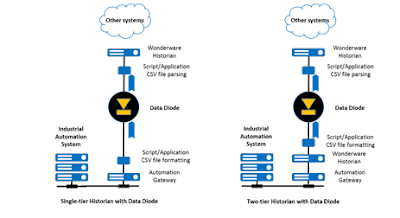As we enter the final weeks of 2015, did it live up to what
we expected, what trends did it star to cement into Operational System design.
These are just some of observations I have seen:
1/ Shift to
significant operational transformation programs, vs just projects, as accelerated in the second half of 2015.
Certainly we have seen a lot of projects initially started or investigated as
projects in 2014, in 2015 reemerge as multi-site,
multiyear transformation programs. With the understanding that these programs
are on journey both in technology, but also operational goals/ outcomes, and
culture.
Certainly a couple of us have seen a significant amount of
time allocated to evolving these opportunities working with the customer to help define their outcomes, the approaches, this
has been and is still continuing as educational process for all involved. This is fundamentally changing the engagement models
between end user vendors and engineering houses as a partnership, requiring
changes on both sides.
2/ Cyber Security/
Application Security: This continues to grow as a huge area of interest, but
this year it shifted not only how to secure, but how to maintain successfully, evolve their business and agile
operations in a tighter security model. Realization that cost is not just in
setting up a secure operational environment, but the cost of evolving and
sustaining it while maintaining an agile business requires a strategy on it’s own.
3/ Operational
Awareness/ Effectiveness: Understanding,
not the “aging workforce” but the transformation in both “workforce culture/
approach” and transformation in “Workspace” are real. That today's
and last ten years of operational systems
will not satisfy the agile decisions that required, but also the changing
workspace culture and methods. The amount of workshops and strategies sessions
I have asked to be involved in 2015 was three times that of 2014, and they were clear
strategic discussions around people and how people will operate in the future.
4/ Understanding and
reality of Internet of Things: The hype has been here and continues around IOT.
But there has been some real sole searching
in many industrial companies to understanding what it means to them. Many it
dawned as the operational alignment end efficiencies they have in the “walls of
the plant” now can extend to the “mobile plant”. In Oil and Gas, and Mining moving
to include “extraction” wells, equipment in the operational process in real-time.
In many other industries, it moved the
mobile receivables plants, distribution trucks and then the distribution centers, etc.
to be included in the “end to end” operational control.
5/ Realization that
the Operational architecture of the future near and long term will have Internet and “cloud” as a natural part of it,
and we must design the security, and systems assuming on premise and off
premise architecture.
All of the above does surprise us, based on the trends, but
it is good to see the shift from talk to reality. I would expect that 2016 this
strategic journey programs to increase. Certainly the scope of operational responsibility
is changing include a end to end supply chain, that means move outside the
plant walls with the traditional systems, and we will see the alignment of
Process operations and utility operations (power) into one operational strategy
and control.
Have a very happy holiday season and may 2016 continue the momentum to deliver operational solutions that will handle the "operational transformation" happening around us.


















